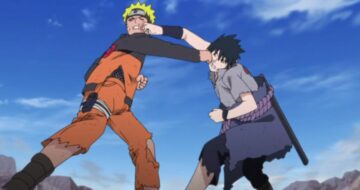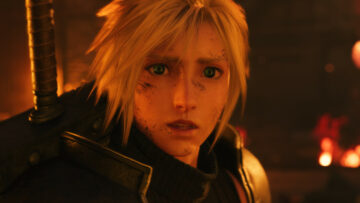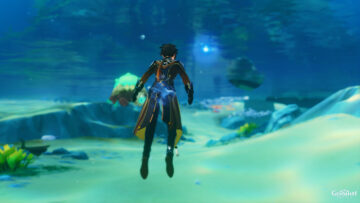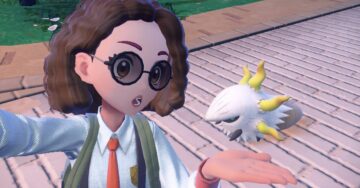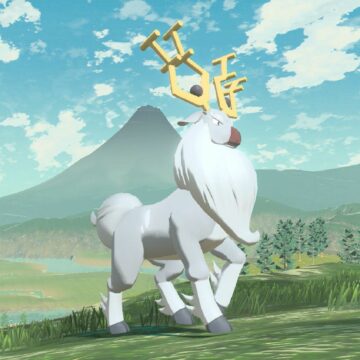It is a truth universally acknowledged that the book is better than the movie or show.
Except when it isn’t.
Netflix’s new fantasy series Shadow and Bone is based on the first book of Leigh Bardugo’s bestselling Grishaverse books, about a kingdom in turmoil and the magic users who defend it. In the hands of showrunner Eric Heisserer (screenwriter for the adapted version of Arrival and Bird Box) and his team, the first novel finds a new life over eight hour long episodes, and fulfills the potential it always had. Bardugo is the first to admit that her 2012 debut novel relied on the trappings of Chosen One narratives; while her other novels step away from those conventions, the main series has always been about one girl with one unique power saving the world. But now, nearly 10 years after the first book was published, her story has evolved to match the strength of the rest of the series.
This may seem like the deepest blasphemy for book lovers, but there is a uniquely satisfying feeling in seeing a favorite book brought to life onscreen in a way that not only faithfully retells the story on the page, but also augments the existing text into something better. Though it’s full of worldbuilding lore that might hinder newcomers, Shadow and Bone is the best sort of adaptation for longtime fans: one that might just possibly be better than the source material.
[Ed. note: This review contains setup spoilers for Shadow and Bone.]

Shadow and Bone follows the events of the first novel in Bardugo’s main Grishaverse trilogy. In wartorn Ravka, a country split in half by a swath of tangible darkness known as the Shadow Fold, young mapmaker Alina Starkov (Jessie Mei Li) discovers she has the power to summon sunlight. It’s a near-mythic power that could dissolve the Fold at last, and Alina is whisked away from her former life and her best friend Mal (Archie Renaux) to train with the kingdom’s other magic users, the Grisha, under formidable General Kirigan (Ben Barnes). Elsewhere, a band of thieves led by the cunning Kaz Brekker (Freddie Carter) schemes about how to get his crew to cross the Fold for the heist of a lifetime.
The show dumps a lot of lore on audiences very quickly, which may immediately appeal to longtime fans, just as potently as it might turn newcomers off the show. There’s a lot of vocabulary to catch up on — what’s a Grisha? What is the difference between a Squaller and a Tailor? And then there are the bigger questions, like who Ravka is warring against. One of Bardugo’s strengths in her novels has been the seamless worldbuilding, which she integrates smoothly into the plot so it rarely feels like a big info-dump. It feels like Heisserer and the rest of the creative team tried to do the same thing, while making sure longtime fans wouldn’t feel patronized. The result varies. The show doesn’t hold anyone’s hand, which means some viewers might lose their way. But viewers who can keep up, and fans of the books who are already a step ahead, are in for an exciting ride.
Shadow and Bone works well as an adaptation because it not only recounts the events of the first book in the first Grishaverse trilogy, it expands on them, integrating new stories into the fold. (Pun intended.) When it comes to those new stories, roping in characters from subsequent novels bolsters the otherwise standard Chosen One plotline. The first season admittedly brings together a lot of moving parts, and they take a while to mesh together well. But once they all start clicking, the storylines build to a satisfying climax. The strength lies in the characters. Compelling on paper, they come to life in the show vividly, their relationships and motives adding color and shades of grey to an otherwise black-and-white plot.

But it isn’t the extra material that makes Shadow and Bone work so well as an adaptation. It’s the fact that the main story — Alina’s story — actually works better when she’s part of a larger and more inclusive narrative. Panning away from Alina’s limited first-person perspective immediately bolsters everyone else’s stories. The biggest, most impactful change is in Alina and Mal’s relationship. In the books, readers only get Alina’s side of their story. The double whammy of her own insecurity and her letters to Mal going unanswered doesn’t paint him as a good friend, let alone a good love interest. But the series establishes Mal’s side as well, and Renaux does a splendid job of playing him not as an all-star unattainable, handsome boy-next-door, but as someone cut from the same scrappy cloth as Alina, willing to do anything for her. He’s rougher around the edges now, but that just makes him a more compelling character. Their relationship evolves from seemingly one-sided into some beautiful and driving mutual pining, which in turn makes their core character motivations all the more fulfilling.
Alina herself also becomes more compelling onscreen, transcending from the trappings of the archetypical ordinary girl in the center of fantastical conflict. The biggest change is that she’s now explicitly biracial. That update comes with both positive and negative ramifications. On one hand, because so much of her ostracization is based on the fact that she resembles Ravka’s enemies, her story ends up playing into Netflix’s weird run of biracial characters at war with their identities. But on the other hand, within the show itself, the casting makes Alina’s loneliness even more powerful. She isn’t just a scrappy orphan who isn’t like the cool, glamorous Grisha girls; she actually has a legitimate reason to feel like an outsider. (And on a more personal note, it’s just immensely fulfilling to see a half-Chinese heroine at the center of an epic fantasy.)
Overall, the first season of Shadow and Bone pulls off a masterful feat: It’s an adaptation of a book that uses the strengths of television to elevate the story on the page. By integrating new stories, expanding on old ones, and fleshing out characters, Heisserer, Bardugo, and the rest of the creative team have built up a show that both faithfully adapts its source, and makes deliberate, interesting changes. It is a gamble, though — Shadow and Bone is a show unapologetically designed for those who love the books, and it risks alienating new viewers who might not want to keep up with the pace. But if the quality of this first season is any indication, the subsequent Grishaverse books — not just the main trilogy, but the spinoff and sequel novels as well — will be an utter delight to see onscreen. While the first season retells the first book completely, there are still lingering questions and big plot points left to explore. Here’s hoping we get to see what comes next.
All eight episodes of Shadow and Bone premiere on Netflix on April 23.
Source: https://www.polygon.com/22394023/shadow-and-bone-review-netflix
- adapts
- appeal
- April
- around
- BEST
- Biggest
- Books
- build
- Catch
- change
- conflict
- Conventions
- Creative
- driving
- ELEVATE
- ends
- events
- expanding
- expands
- eye
- finds
- First
- full
- good
- hold
- hoping
- How
- How To
- HTTPS
- interest
- IT
- Job
- Led
- Limited
- Loneliness
- Long
- love
- Making
- Match
- movie
- Netflix
- Other
- paint
- Paper
- perspective
- power
- Premiere
- quality
- readers
- Relationships
- REST
- review
- Run
- saving
- seamless
- Series
- Shadow
- So
- split
- start
- Stories
- sunlight
- television
- The Source
- Update
- users
- war
- What is
- WHO
- within
- Work
- works
- world
- years


